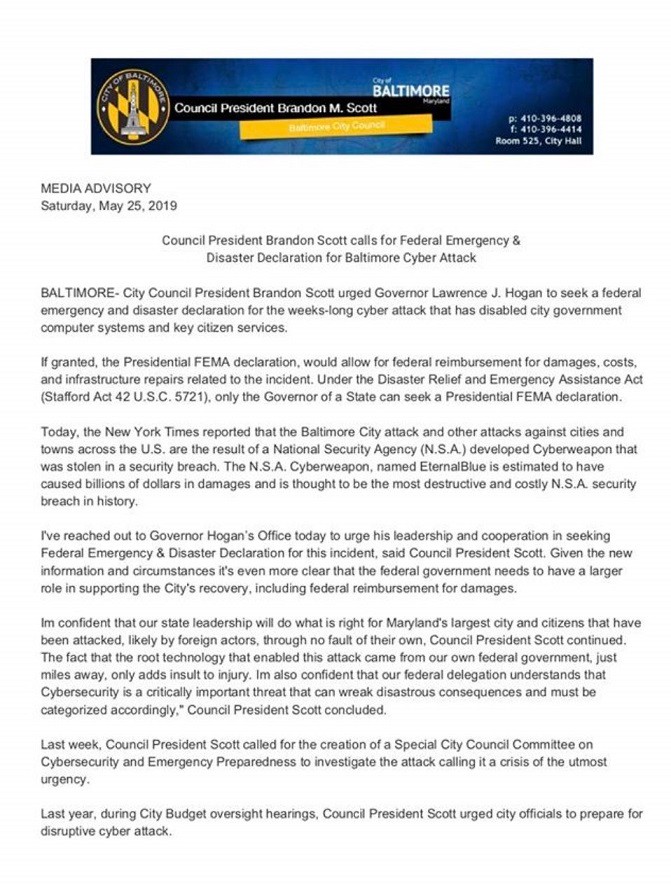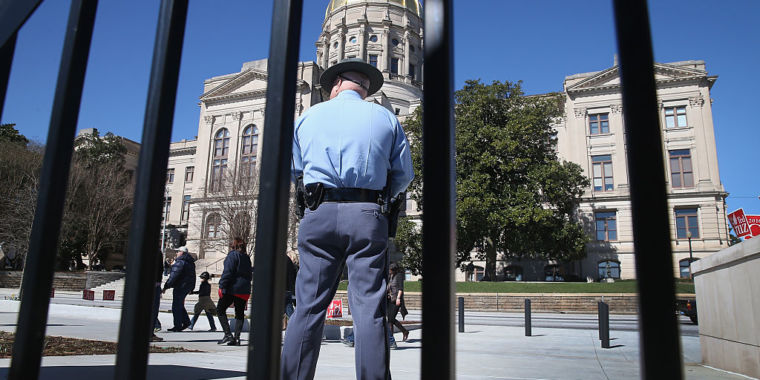The mayor and city council president of Baltimore are pushing for the ransomware attack that brought Baltimore's city government to a standstill to be designated a disaster, and officials are seeking federal aid to help pay for the cleanup from the RobbinHood malware's damage. This call came after a
New York Times report that the ransomware used the EternalBlue exploit developed by the National Security Agency to spread across the city's network.
EternalBlue was part of a set of tools developed for the NSA's Tailored Access Operations (TAO) group that were
leaked by Shadow Brokers in 2017. The tool was then used two months later as part of WannaCry, the destructive cryptographic worm that affected thousands of computers worldwide. Shadow Brokers has been linked by some security experts to a Russian intelligence agency; WannaCry has been attributed to North Korea's military. After being alerted by the NSA. Microsoft issued a security patch for the vulnerability exploited by EternalBlue (among others) in March of 2017, even issuing patches for Windows Vista (which was at the time just about to be dropped from long-term paid support) and Windows XP (which had already dropped out of support).
The
WannaCry malware attack arrived as many companies were still testing the patch for deployment. Now two years later, the protocol exploited by EternalBlue, WannaCry, and the NotPetya ransomware worm (Server Message Block version 1, or SMB v.1) is still visibly in use by more than 1 million Internet-connected computers worldwide, according to data from the security search engine Shodan. As Ars recently reported, thousands of those computers are part of the networks of US school districts; many more belong to local governments, law enforcement organizations, state universities, community colleges, and other public institutions. Even more of these vulnerable machines run inside similar organizations' networks, concealed from scans by firewall filters but still vulnerable to the exploit if an attacker gains access through another means. In Baltimore's case, several sources have told Ars that the ransomware arrived via a phishing attack against a city employee. It is not clear if the phishing attack was targeted. Once the initial foothold was established by RobbinHood's operators, the ransomware was spread across the network—at least in part by using code cut-and-pasted from the EternalBlue tool leaked by ShadowBrokers.







